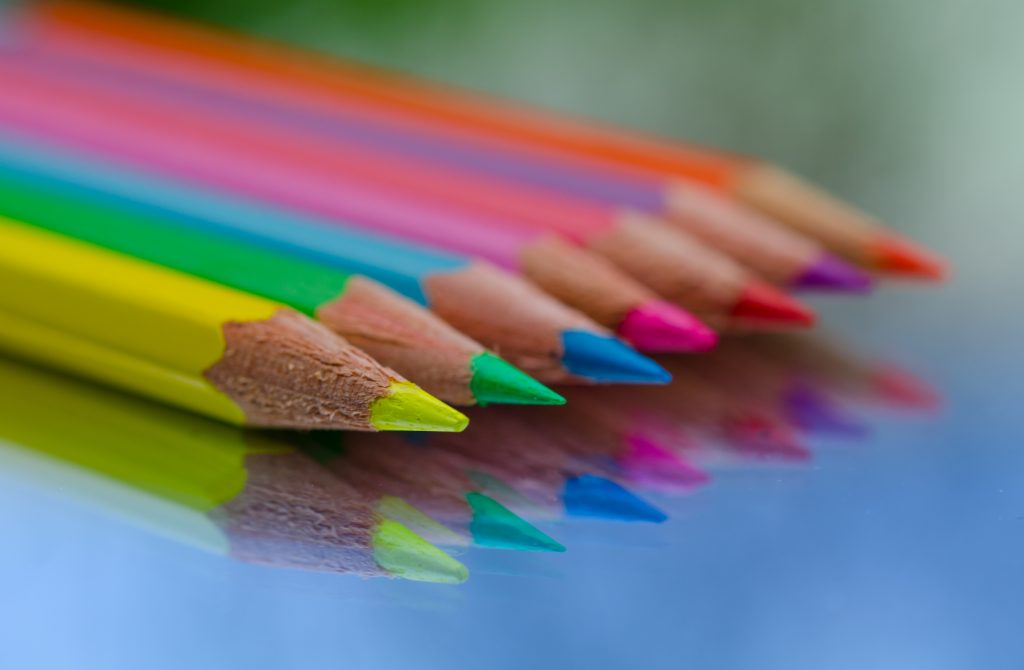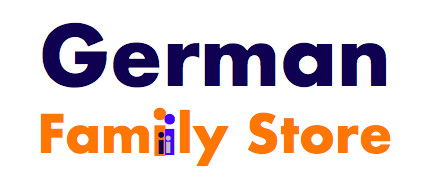
When your child is painting and drawing, not all of the color is ending up on paper, cardboard or his DIY project. Even if you use some protection gear like an apron and arm sleeves after painting and drawing the table, the desk mat, clothes, arms, hands and face are as colorful as the artwork itself. Or if your child is chewing on the pens a part of the color ends up in his mouth.
Beside the material it is also important that you look for the color coverage and pencil posture.
As long as the colors and material used are free of harmful substances this is not a tragedy.
To protect your child look out for preservatives, solvents, azo dyes and polycyclic aromatic hydrocarbons (PAHs). PAHs can cause cancer and change the genome. Some pencils can also contain aromatic amines derived from azo dyes. Amines are suspected of producing tumors.
You can find as well pollutant-free pencils for your child.
When you look at the size of your child’s hand it will not surprise you that using an adult standard sized pencil or color pencil will not work well for your child.
For your 2-3 year old child a thick crayon is a better choice because he can grab around it and see results when scribbling. The next step in the development would be a jumbo triangular pencil to support the right pencil grip. And still being the correct size that your child can hold it in his hand.
Material
The wood you should look for in a pencil is cedar because it sharpens evenly without splinters. Other woods like basswood, polar or white fir will sharpen ok but you will see splinters. When you see pencils with small holes or pits in the wood you should avoid them because they are made with tropical and pitted wood. Most likely from unsustainably harvestings beside you will see an uneven sharpening.
Avoid pencils made from extruded plastics. They have a smooth plastic casting and they are not biodegradable beside a difficult sharpening.
Sustainability
For your and the future of your child look for wood from sustainable foresting.
Here 3 of the most common ones when it comes to cedar and pencils
- Genuine Incense Cedar – A Renewable Resource
- PEFC – Programme for the Endorsement of Forest Certification
- FSC – Forest Stewardship Council
The Core
Your lead pencil core is made of a mixture of graphite and oil or wax. Where as for color pencils the core is made from fillers like kaolin, the same material porcelain is made of. Beside wax and oil you will find as well water based mixtures and to bring in colour color pigments are used. The brightness and softness of a core will indicate the quality of the product and its price.
There is no standardization on the grading of pencils. So the smoothness, hardness and general quality is different from manufacturer to manufacture. What you can expect is that a no. 2 pencil is comparable with a HB pencil and as softer (B grades) they are as darker they are and better they cover the ground. In contrast the harder (H grades) a pencil is as light it covers the ground material.
As your child will prefer bright colors, a softer pencil will work better because if your child has the feeling there is not enough color it will press harder, the muscles will cramp and the tip will break. And your child will lose his interest quickly.
Last but not least to look for the core is that they are shatterproof. Nothing is more anzing for your child if a pencil drops, the core breaks and your child needs to sharpen the pencil again and again because the core broke and the tip is falling off when sharpening. Here again a soft core is better and some manufactures are using on top of the core a skin that keeps the core together even when it broke.
The Shape
Traditional is the round pencil. It is easy to grip and a jumbo variante is a good choice for learning.
The hexagon shape is good for general use and rolls not from the table as his round brother.
Triangular pencils are today’s first choice for your child when it comes to training the correct tripod grip in preparation for writing. Here to start with a jumbo version is a good starting point.
Lacquer and Imprint
The number of lacquer layers of your pencil varies from 1 up to 7 or even more layers. And as well the quality of the lacquer has a broad variation from manufacturer to manufacturer.
The imprint for most pencils is done by foil stamp. And as slowly the foil stamp is done as better is the visual result.
Low grade wood and rushing with the imprint you can easily detect by uneven imprints and crushing of the surface.
Grip
Today you find different surfaces where you child can grasp the pencil. You will find soft grips and dots that the pencil is not too smooth and better to hold for your child.
How many Colors
When you start with assorted colors 12 is again a good start because it will help your child to differentiate between light and dark colors. Like light and dark blue, light and dark green
Wrap up
When your child starts drawing with pencils and colored pencils look for big triangular ones with a not too smooth surface. And for long lasting fun when drawing and painting your child want to have bright colors and shatterproof pencils. And when you look for an assortment 12 colors will do the job.
Leave a comment what kind of balance bike you choose for your child and why?
 When your child is painting and drawing, not all of the color is ending up on paper, cardboard or his DIY project. Even if you use some protection gear like an apron and arm sleeves after painting and drawing the table, the desk mat, clothes, arms, hands and face are as colorful as the artwork itself. Or if your child is chewing on the pens a part of the color ends up in his mouth.
Beside the material it is also important that you look for the color coverage and pencil posture.
As long as the colors and material used are free of harmful substances this is not a tragedy.
To protect your child look out for preservatives, solvents, azo dyes and polycyclic aromatic hydrocarbons (PAHs). PAHs can cause cancer and change the genome. Some pencils can also contain aromatic amines derived from azo dyes. Amines are suspected of producing tumors.
You can find as well pollutant-free pencils for your child.
When you look at the size of your child’s hand it will not surprise you that using an adult standard sized pencil or color pencil will not work well for your child.
For your 2-3 year old child a thick crayon is a better choice because he can grab around it and see results when scribbling. The next step in the development would be a jumbo triangular pencil to support the right pencil grip. And still being the correct size that your child can hold it in his hand.
When your child is painting and drawing, not all of the color is ending up on paper, cardboard or his DIY project. Even if you use some protection gear like an apron and arm sleeves after painting and drawing the table, the desk mat, clothes, arms, hands and face are as colorful as the artwork itself. Or if your child is chewing on the pens a part of the color ends up in his mouth.
Beside the material it is also important that you look for the color coverage and pencil posture.
As long as the colors and material used are free of harmful substances this is not a tragedy.
To protect your child look out for preservatives, solvents, azo dyes and polycyclic aromatic hydrocarbons (PAHs). PAHs can cause cancer and change the genome. Some pencils can also contain aromatic amines derived from azo dyes. Amines are suspected of producing tumors.
You can find as well pollutant-free pencils for your child.
When you look at the size of your child’s hand it will not surprise you that using an adult standard sized pencil or color pencil will not work well for your child.
For your 2-3 year old child a thick crayon is a better choice because he can grab around it and see results when scribbling. The next step in the development would be a jumbo triangular pencil to support the right pencil grip. And still being the correct size that your child can hold it in his hand.

Recent Comments